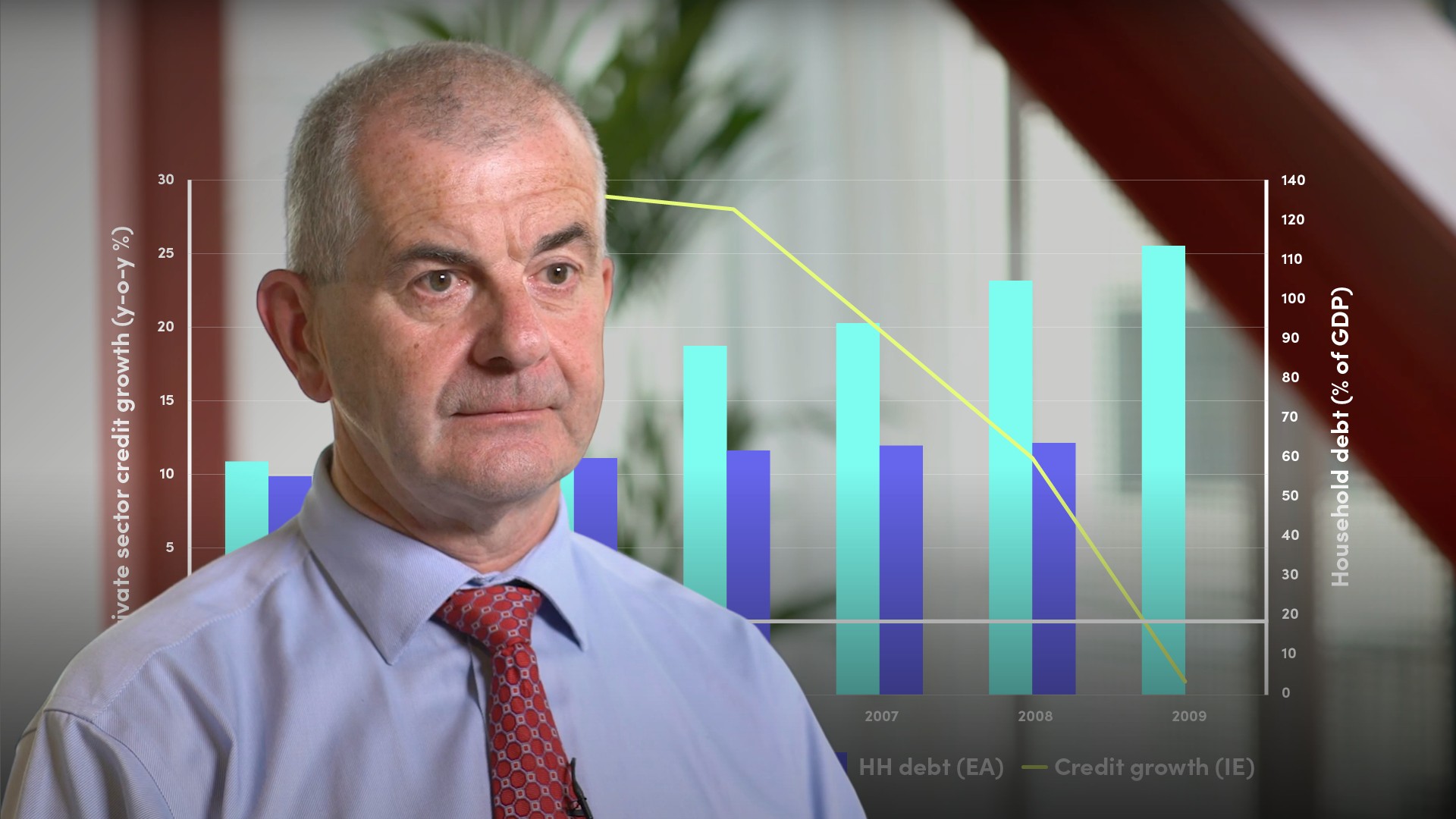
Irish Financial Crisis and the Irish Bank Guarantee

Michael Torpey
30 years: Treasury & banking
Michael provides an account of the liquidity crisis which was triggered by the Global Financial Crisis, and provides his thoughts on the Bank guarantee - a guarantee by Ireland of the debt liabilities of the banks in September 2008.
Michael provides an account of the liquidity crisis which was triggered by the Global Financial Crisis, and provides his thoughts on the Bank guarantee - a guarantee by Ireland of the debt liabilities of the banks in September 2008.
Subscribe to watch
Access this and all of the content on our platform by signing up for a 7-day free trial.

Irish Financial Crisis and the Irish Bank Guarantee
11 mins 44 secs
Key learning objectives:
Explain why Ireland’s banks suffered a liquidity crisis
Describe how the Irish government was itself caught up in the crisis
Explain the consequences of the Irish bank guarantee
Overview:
When the financial crisis reached Ireland’s banks, their liquidity rapidly dried up, leaving them at an immediate risk of failure. The government was forced to step in and guarantee the banks’ debts. That put a great strain on Ireland’s finances in turn, with Greece’s financial problems making matters worse. As a result, Ireland suffered from a long-term problem of bad loans.
Subscribe to watch
Access this and all of the content on our platform by signing up for a 7-day free trial.
What was the Irish liquidity problem?
When the global financial crisis hit, Irish banks that heavily borrowed in international markets to finance land and property that had inflated massively, were the most heavily affected.
Liquidity, already under strain, dried up. As a result of this, Irish banks, such as Anglo Irish Bank were forced to take recourse to Central Bank borrowings to shore up balance sheet funding. They also had to rein in lending. The driver of seemingly ever-increasing property and land valuations was now disappearing.
This liquidity problem exposed how significantly inflated the asset valuations that secured their lending were.
Did Ireland anticipate the crash?
Ireland remained in denial as it approached the brink of a full-blown financial crisis. Even as liquidity dried up, the banks solvency ratios were considered to be adequate or at least in territory where remedial action could be taken.
Also, the Central Bank was there to provide liquidity. Both the scale and the speed of build-up of liquidity support were phenomenal. However, with the run on liquidity of the Irish Banks showing no sign of abating, the question of the State standing behind the banks came to the fore.
This was addressed in the form of a guarantee by Ireland of the debt liabilities of the banks in September 2008.
What was the Government bank guarantee scheme?
The Irish Government bank guarantee scheme was introduced as Anglo Irish Bank reached a critical point, potentially days from failure. If the Anglo Irish Bank failed, it risked a rapid knock-on effect on the other Irish banks as most or all had relatively high property-related exposures. This remains one of the most contentious decisions in Ireland’s handling of its financial crisis.
While a bank guarantee may have been necessary to restore some stability, the guarantee placed a massive strain on the finances of Ireland and many doubted Ireland’s ability to support such a guarantee.
The total amount of debt guaranteed was around €440 billion or 10 times Ireland’s national debt at that time. Many were surprised to see the guarantee extended to subordinated debt liabilities of the banks covered by the guarantee.
The protection of subordinated debt delayed burden-sharing by these bondholders in the losses of the banks. At a later stage when no longer guaranteed, subordinated debt holders did bear some €15bn of Irish bank losses.
Was the guarantee successful?
The guarantee worked for a time. In its immediate aftermath, there was an improvement in access for the banks to the inter-bank and bond markets. 2009 saw debt markets once again open to Government-guaranteed borrowings by the Irish banks. There was a steady stream of debt issuance by the banks, particularly AIB, BoI and IL&P lowering their reliance on Eurosystem funding.
However, the escalation of the crisis in Greece in the Spring of 2010, at around the same time that a more realistic picture of the huge capital shortfall in the Irish banks was beginning to emerge, raised the spectre that open-ended reliance on sovereign support may not be sufficient. Markets once again dried up for the Irish banks.
Even regardless of Greece, the Irish banks were labouring under a massive burden of delinquent or potentially delinquent loans for property and development. In consequence, there was no quantification of the true capital positions of the banks.
The guarantee brought time, however, the scale of the crisis and the deterioration in the State budgetary position meant that a bigger solution was going to be needed sooner or later.
Initial work on the impact of falling property values on the banks’ balance sheets was enough to demonstrate that the Irish banks needed fresh capital. This, along with other issues, led to the nationalisation of the Anglo Irish Bank and Irish Nationwide Building Society, and increased capital injections by the State into both AIB and the Bank of Ireland.
How would the banks’ balance sheets be restored?
There was no effective way to predict either the level or timing of recoveries on the bank’s loans in a market that had ceased to function. This led to a discussion about how to cleanse the bank’s balance sheets without imposing an additional burden on the Irish taxpayer. This led to the creation of the National Asset Management Agency or NAMA.
Subscribe to watch
Access this and all of the content on our platform by signing up for a 7-day free trial.

Michael Torpey
There are no available Videos from "Michael Torpey"



























